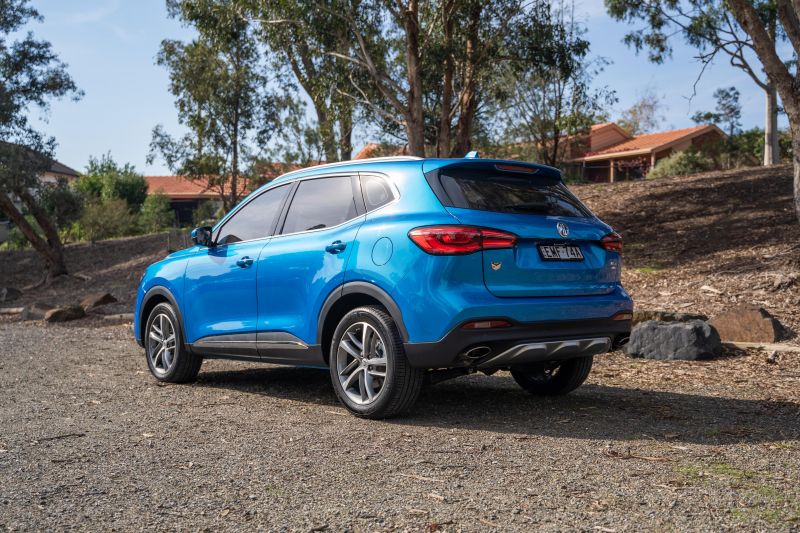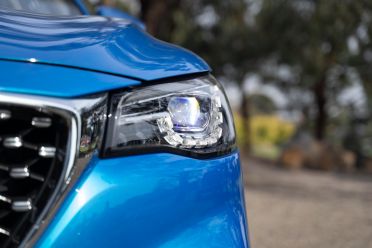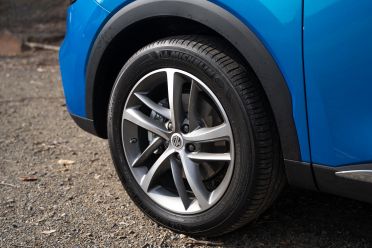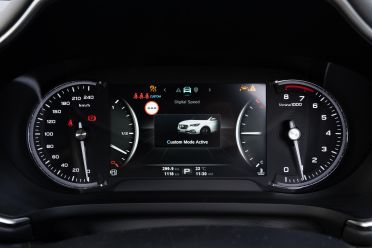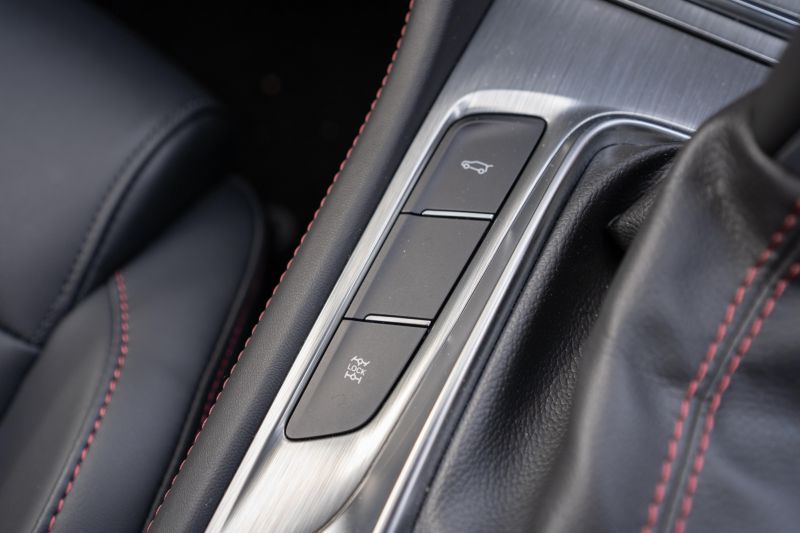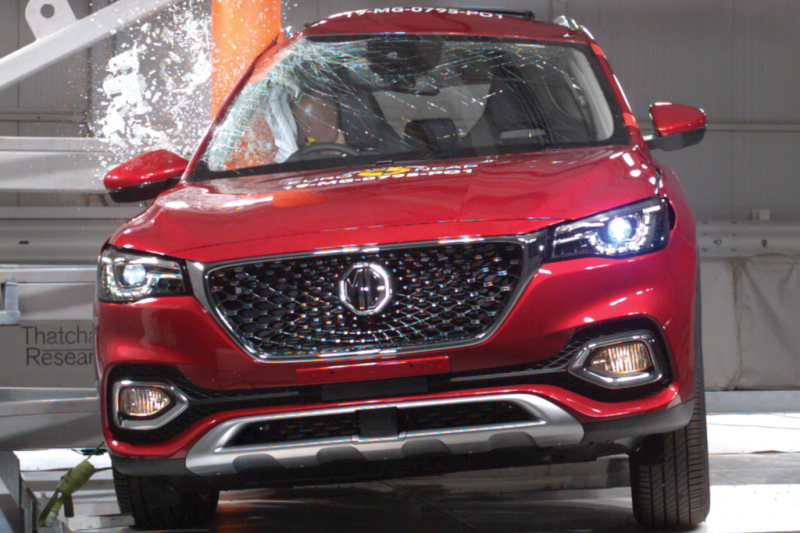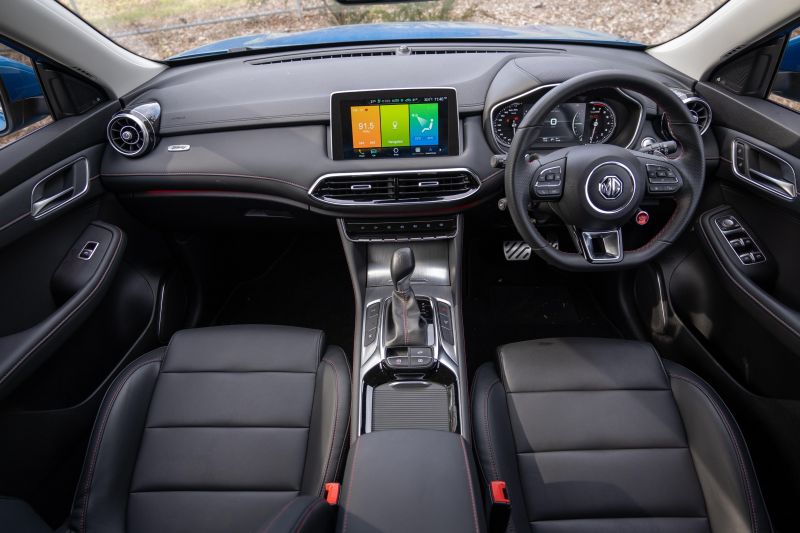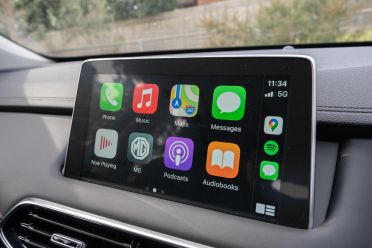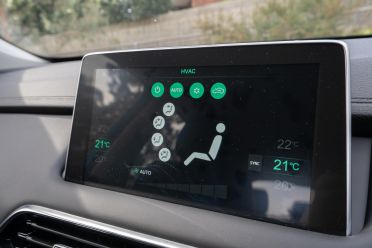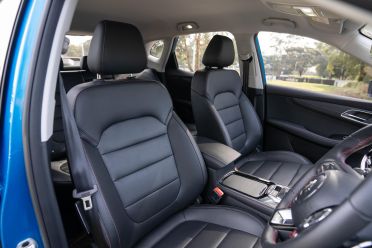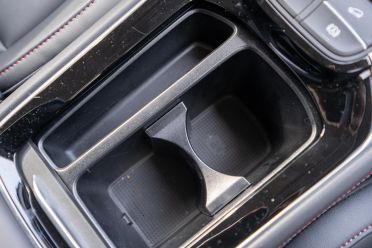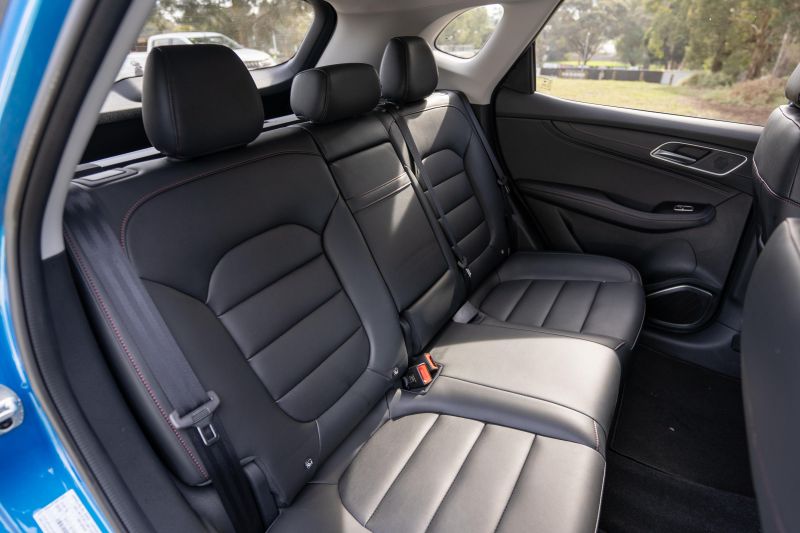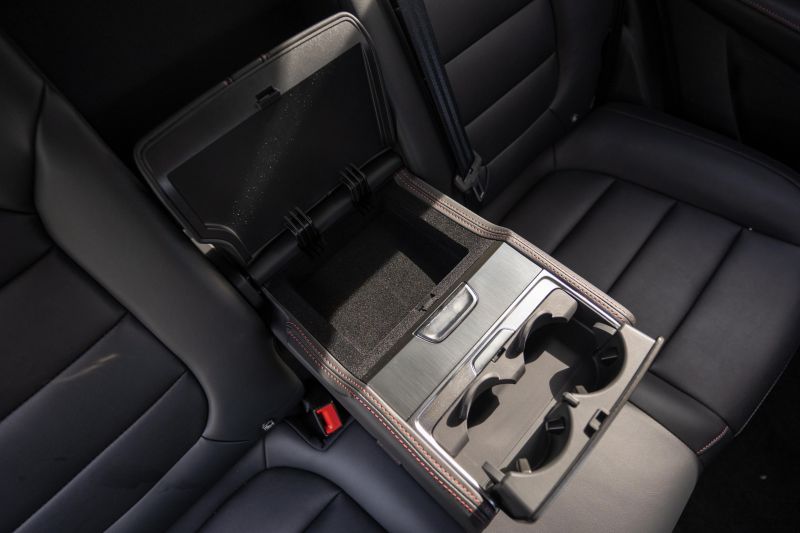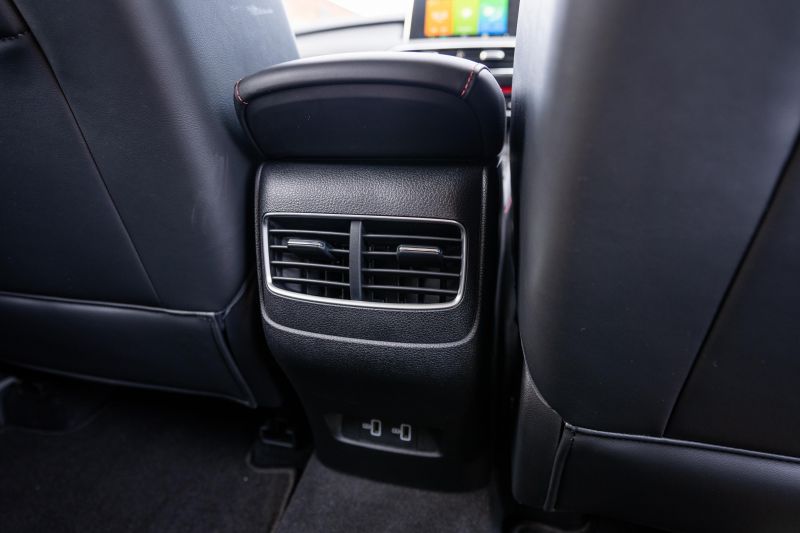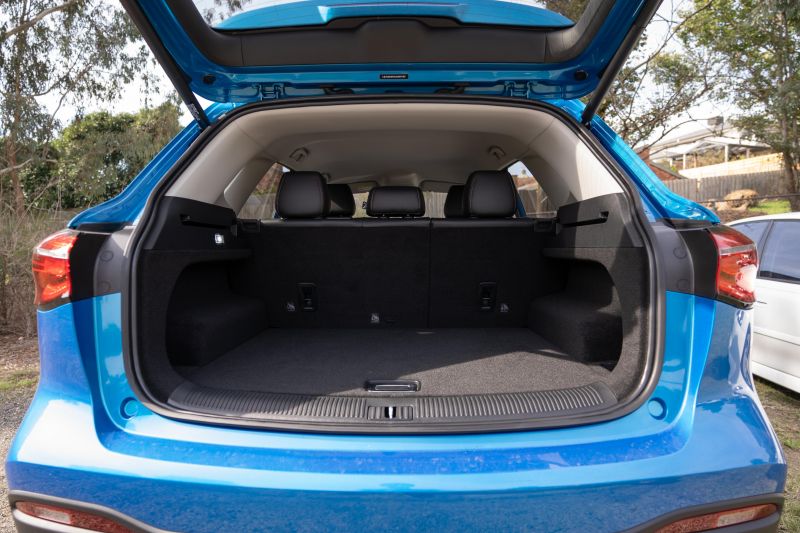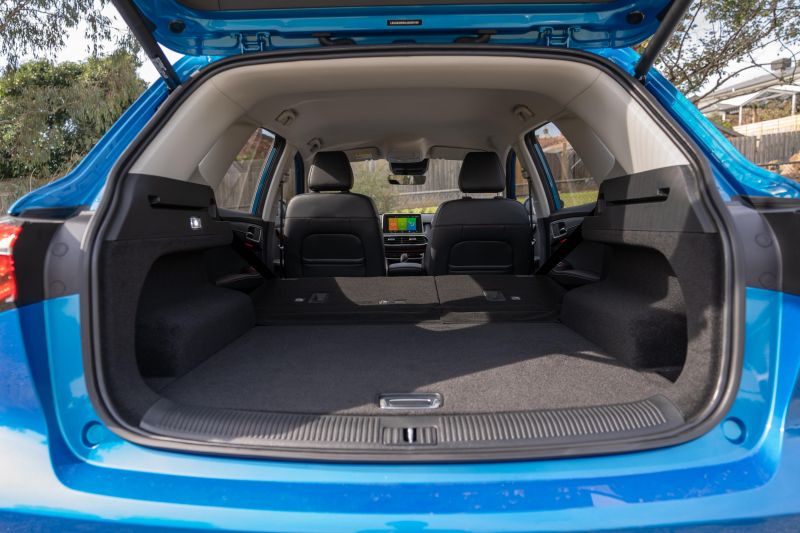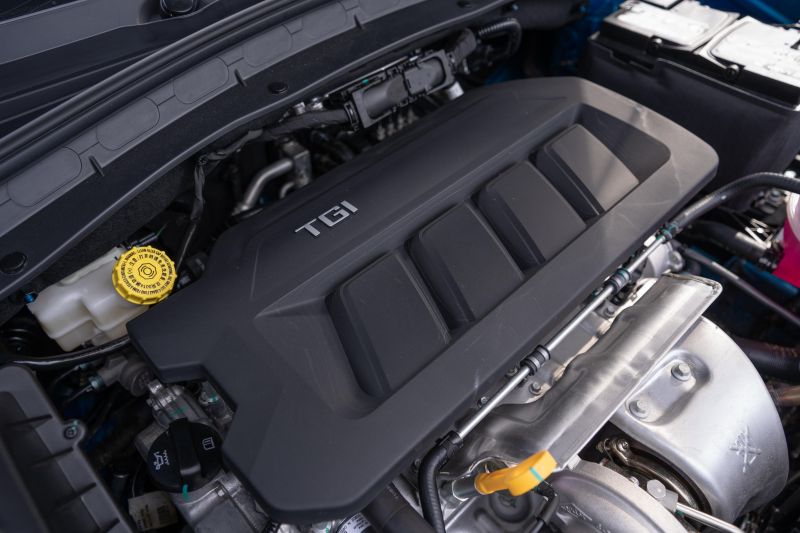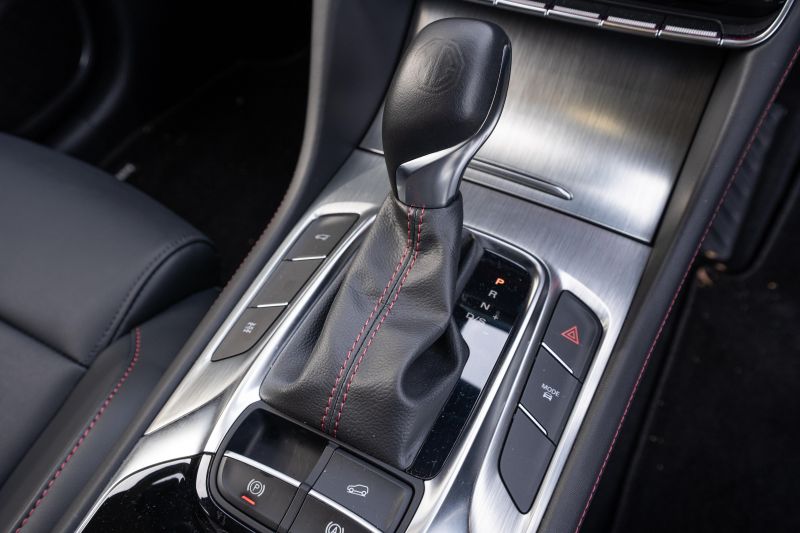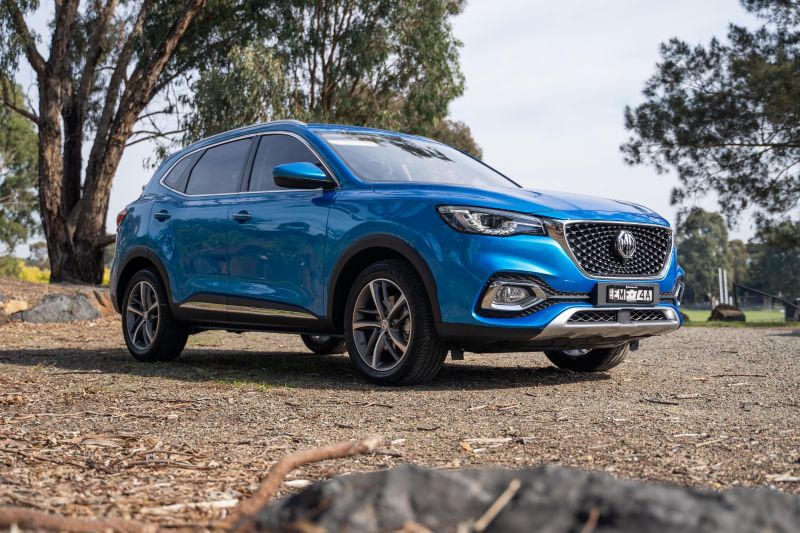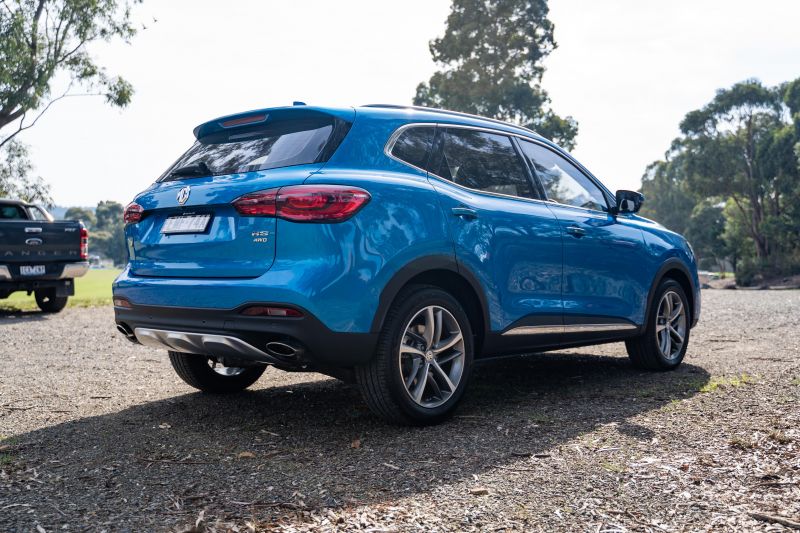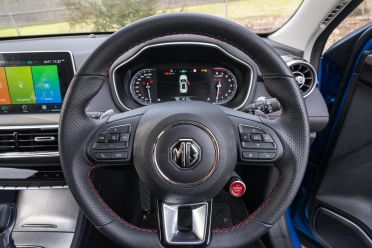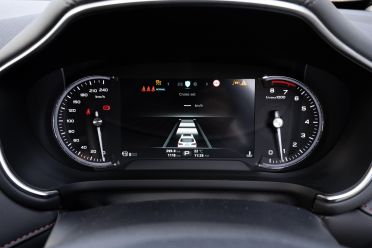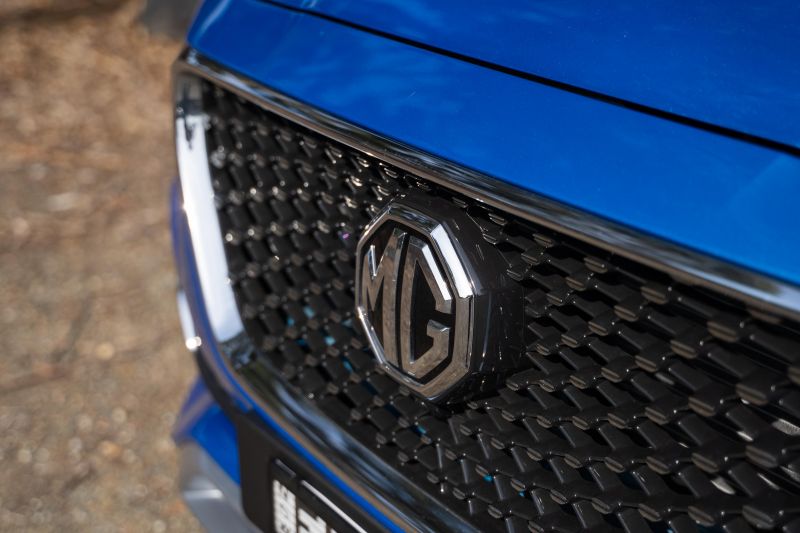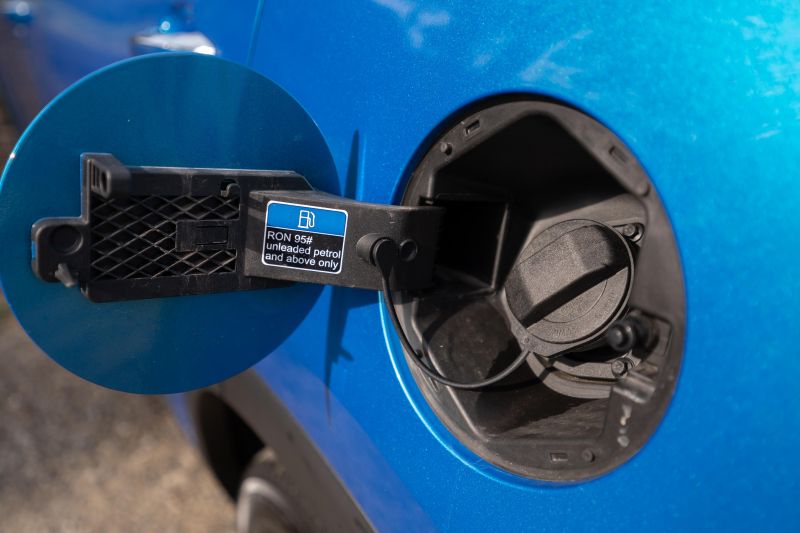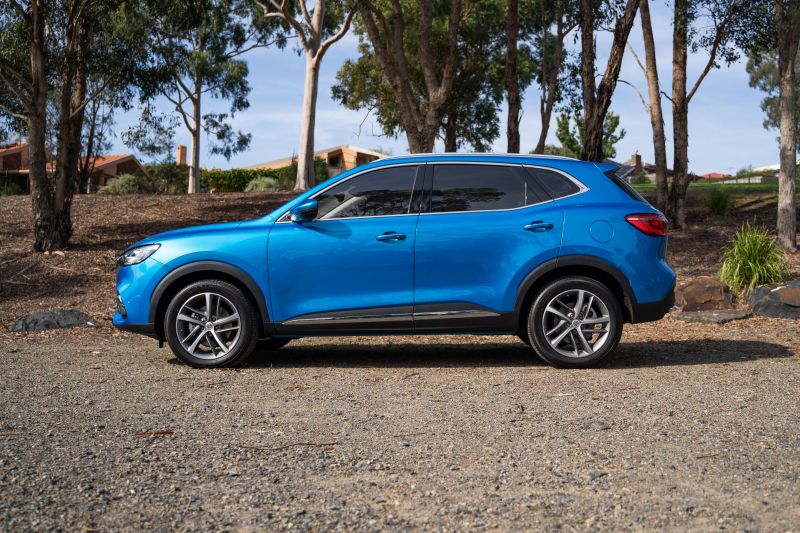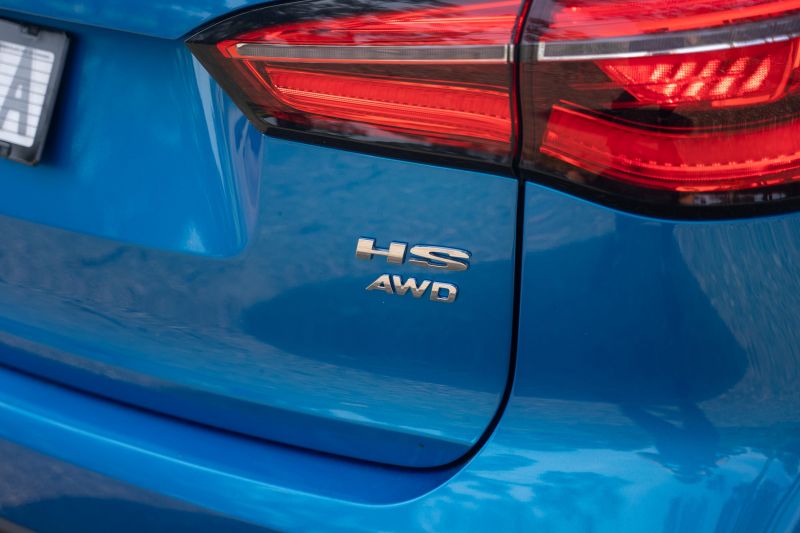MG continues to push upwards the Australian new vehicle sales charts. Its flagship HS SUV aims to stamp its presence in the top-selling mid-size SUV segment.
Consistently selling more than 500 units per month and increasing with every month, the MG HS range has expanded in 2021, headlined by new all-wheel drive models with a more powerful engine, as well as a plug-in hybrid to take on the Mitsubishi Outlander PHEV.
Here on test we have the 2021 MG HS Excite X, the entry point into 2.0-litre turbo, all-wheel drive motoring.
At $37,990 drive-away, it’s no longer the ‘cheap’ option in the segment but certainly aims high with heaps of equipment and high outputs for the class.
Can MG’s flagship SUV kick it with the best in class? Let’s find out.
You can also watch our video review of the MG HS Excite 1.5T FWD below:

How much does the MG HS Excite X cost?
The 2021 MG HS Excite X sits just above the mid-point of the Chinese-made SUV range, priced from $37,990 drive-away. It’s also the most affordable way into an HS with 2.0-litre turbo power and all-wheel drive.
You can have essentially the same trim level with a smaller 1.5-litre turbo petrol engine and front-wheel drive for $3000 less ($34,990 drive-away).
Here’s the full 2021 MG HS price list below:
- 2021 MG HS Core: $29,990
- 2021 MG HS Vibe: $31,990
- 2021 MG HS Excite: $34,990
- 2021 MG HS Excite X: $37,990
- 2021 MG HS Essence: $38,990
- 2021 MG HS Essence Anfield: $40,690
- 2021 MG HS Essence X: $42,990
- 2021 MG HS Plug-in Hybrid: $46,990
All prices are drive-away
The HS Excite X is priced in the ballpark of a huge range of quality vehicles.
They include the Ford Escape ST-Line FWD ($37,990), Honda CR-V VTi-X ($37,000), Hyundai Tucson Elite 2.0 FWD ($39,000), Kia Sportage SX FWD ($34,790 drive-away), Mazda CX-5 Maxx Sport 2.5 AWD ($39,490), Mitsubishi Outlander LS AWD ($37,990), Nissan X-Trail ST-L FWD ($38,525), Subaru Forester 2.5i-L ($37,440), Toyota RAV4 GXL FWD ($37,415) and Volkswagen Tiguan 110TSI Life ($39,690).
It’s worth noting most competitors at this price point are naturally-aspirated with front-wheel drive, with closer spec-for-spec drivetrains costing thousands more.
With that said, the Ford Escape actually outguns the MG with its class-leading outputs (183kW/387Nm v 168kW/360Nm) while claiming to use less fuel too (8.6L/100km v 9.5L/100km).
MORE: 2021 MG HS price and specs
What do you get?
The Excite and Excite X get the following equipment highlights over lower grades:
- Satellite navigation
- LED headlights
- Sequential LED indicators (front + rear)
- Sports mode
- Paddle shifters
- 18-inch alloy wheels
- Power tailgate
- Dual-zone climate control
- Alloy pedals
- Ambient interior lighting
Features carried over from lesser trim levels include:
- Leatherette upholstery
- Leather-wrapped steering wheel and shifter
- Six-speaker sound system
- Fog lights
- 10.1-inch touchscreen infotainment system
- Apple CarPlay and Android Auto (wired)
- Reversing camera with rear parking sensors
- Electronic park brake
- Proximity entry and push-button start
- Cloth upholstery
- LED tail lights
- LED daytime running lights
The MG certainly stacks up well against rivals on paper, without really setting any new benchmarks in terms of spec.
These days most brands are decking vehicles out with their equivalent of the MG Pilot safety suite across the board, and an increasing amount of competitors are getting larger touchscreens and LED lighting as standard.
Especially at the $38,000 price point, the only real advantage the MG has over the bulk of mainstream rivals is its 2.0-litre turbo donk, though Ford outguns the MG for similar money with the Escape – which is sourced from Spain.
If you want stuff like a surround-view camera and panoramic sunroof, you’ll need to step up to the HS Essence (1.5T) or Essence X (2.0T), the latter asking for $42,990 drive-away.
Is the MG HS Excite X safe?
The MG HS wears a five-star ANCAP safety rating based on tests carried out in 2019.
That’s based on an adult occupant protection score of 92 per cent, child occupant protection of 83 per cent, pedestrian protection of 64 per cent and safety assist of 77 per cent.
All 2021 MG HS models come standard with the MG Pilot assistance suite, which includes:
- Autonomous emergency braking with forward collision warning
- Lane-keep assist
- Lane-departure warning
- Adaptive cruise control with stop/go
- Rear cross-traffic alert
- Blind-spot monitoring
There are also front, front-side and front-curtain airbags.
What is the MG HS Excite X like on the inside?
If you think the MG 3 and ZS line-ups feel built to a price inside, the HS certainly breaks tradition in being one of the nicer cabins in its class.
From the elegant, minimalist dashboard to the array of soft-touch materials and contrast stitching, the MG HS makes a statement that Chinese cars don’t have to look or feel cheap.
All the touch points are competitive with Japanese and Korean rivals in terms of perceived quality. We didn’t have any noticeable rattles or squeaks in our test car, and everything feels well put together.
While it presents well, some of the ergonomics could use some work.
The climate controls, for example, are only accessed via the screen after pressing the toggle-style A/C switch on the centre stack. The driver’s instrument display also defaults to a driver assist view when you engage adaptive cruise control which doesn’t include a real-time digital speedo – you have to flick back a couple menus to get this, and you can’t have cruise speed and speedo in view at once.
There’s also no shortcuts for air recirculation without accessing the aforementioned menu in the central display, and there’s nowhere to conveniently store a larger smartphone out of view when connected to smartphone mirroring.
In terms of the driving position, the manually-adjustable seat offers a decent range of adjustment though you’re perched quiet high even at its lowest setting. As a taller person (I’m a touch over 6’1) this meant my eye level was in line with the rear-view mirror which created a blind spot to my left.
Unlike the MG 3 and ZS, the HS offers reach and rake adjustment for the steering wheel, and once you’ve found your driving position the front seats are quite supportive and offer strong bolstering. You may just feel a tad upright.
We’ve already touched on the 10.1-inch touchscreen with regards to the climate controls, but the MG HS’s infotainment setup feels a generation behind the best in class. Even with Apple CarPlay functionality, it can be quite slow to respond and occasionally will freeze or drop out.
This happened a handful of times during our week with the car, and there were a couple of occasions when fiddling with the A/C and driver-assist settings that the system got overwhelmed and needed some time to sort itself out. I’m sure this would be annoying if it became a regular occurrence.
The six-speaker sound system offers decent audio quality without being anything standout, and the native navigation system is very clearly supplied by a third party and has maps that look weirdly similar to the Whereis interface in my parents’ 2013 Kia Sorento Platinum.
Space in the second row is pretty good for the class, with good head and legroom even for taller passengers behind a tall driver. For reference, I can comfortably sit behind my own driving position and I’m a touch over 6’1.
There’s a fold-down centre armrest with cupholders (featuring a swish brushed alloy look panel and damped opening mechanism), rear air vents, bottle holders in the doors, map pockets behind the rear seats and a pair of USB charge ports.
ISOFIX child seat mounts on the outboard rear seats will keep the little ones locked in, too.
With the second row in place, MG quotes luggage volume of 463L up to the cargo cover. This expands to 1287L with the rear seats folded – it opens up a very flat load bay too.
It’s not groundbreaking for the class, but matches up well with the likes of the Kia Sportage (466L/1455L) and Mazda CX-5 (442L/1342L). What it lacks, however, is an adjustable boot floor, luggage hooks and a remote rear seat release like you’ll find in rivals.
Under the boot floor is a space-saver spare wheel.
What’s under the bonnet?
HS ‘X’ models get a 2.0-litre turbocharged four-cylinder petrol engine, developing 168kW (5300rpm) and 360Nm (4000rpm).
Drive is sent to an on-demand all-wheel drive system via a six-speed dual-clutch automatic transmission.
MG claims a 0-100 time of 8.6 seconds, which seems a little off the pace given a VW Tiguan 162TSI with similar outputs completes the benchmark sprint in a more brisk 6.5 seconds.
It’s not like the HS AWD’s kerb weight of 1700kg is an outlier either, with both the Ford Escape AWD and Volkswagen Tiguan 4Motion quoting similar dimensions.
MG claims the HS 2.0-litre turbo will use 9.5L/100km on the combined cycle. That’s 2.3L/100km more than the 1.5-litre HS, and it’s also worth noting the 2.0-litre model’s fairly thirsty 13.1L/100km city cycle claim.
During our week with the HS Excite X we saw an indicated fuel consumption of 11.2L/100km, over 488 kilometres of mixed driving which included a week’s worth of peak-hour commuting (mix of freeway and city) as well as a 140km round trip from Melbourne to Kilmore in Northern Victoria (country highway)
That’s definitely on the higher side for the segment, especially when the Toyota RAV4 Hybrid can achieve real-world economy in the fives – less than half than the MG’s figure.
We even saw mid- to high sixes in the 2.0-litre atmo Hyundai Tucson in similar driving on the national media launch recently.
MG has also opted not to fit the HS with fuel saving stop/start technology, which no doubt would help reduce that real-world figure in urban driving.
The HS range comes fitted with a 55L fuel tank – giving a theoretical driving range of around 500km based on our fuel consumption – with pricier 95 RON premium unleaded required as a minimum.
Given the high consumption, particularly in urban driving, ongoing running costs is definitely something to consider.
How does the MG HS Excite X drive?
Expecting hot hatch levels of performance? Don’t.
While the MG HS Excite X quotes decent outputs from its 2.0-litre turbo and has a dual-clutch transmission, the drivetrain lacks the refinement and enthusiasm of rival vehicles in the segment.
In town the DCT is lethargic, indecisive and can be quite jerky. During a week of testing I was constantly having to adjust throttle inputs because I just couldn’t manage to drive it smoothly on a consistent basis.
This was particularly annoying in low-speed city traffic, as there’d be little response as the transmission hooks up and then a sudden lurch forward and far more response than you’d expect from minimal input. It was quite off-putting.
While it’s quite typical for dual-clutch ‘boxes to be a little slow off the mark, the sensation in the HS AWD seemed excessive, and the ‘nothing to everything’ feel would be jarring for many people.
Once moving, the HS can also be a little clunky from first into second, at times feeling like when you shift a manual without enough revs. Again, the jerkiness and lack of refinement is just annoying and spoils the experience.
It gets better as the speed climbs, though, with the HS offering a comfortable, quiet ride in town and on the freeway, with accurate steering and confident handling.
No, this won’t bring back memories of MG sports cars from behind the wheel, but there’s a level of noise suppression and ride comfort that is more than a match for the established medium SUV set.
Visibility is pretty good thanks to the large glasshouse, and the MG Pilot suite of active safety systems includes blind-spot monitoring so you have an extra set of eyes when making gaps in traffic or changing lanes on the freeway.
Speaking of the assist tech, we found the car has a habit of beeping and bonging without actually telling you what’s wrong.
I figured out it was when the lane keep assist sensed I was drifting over a marked line or the blind-spot monitoring was telling me not to merge, but it’s not immediately noticeable why the car is doing it because the blind-spot light in the A-pillar is quite small and the lane-keep icon only flashes in the cluster.
On the open road the soft ride maintains its composure, and noise suppression remains as impressive as in town. The engine settles into a more comfortable hum at 100km/h, though it’s spinning at a little over 2000rpm in sixth – a seventh cog like the base 1.5-litre petrol would help no doubt.
The adaptive cruise control system proved handy on daily freeway stints during the daily commute, including plenty of bumper-to-bumper traffic, as well as during a 140km round trip from Melbourne to Kilmore with various Melbournian motorists that don’t understand the concept of ‘keep left unless overtaking’.
All told, the drive experience is a mixed bag, but has potential if MG can iron out the drivetrain bugs.
How much does the MG HS Excite X cost to run?
The MG line-up in Australia is covered by a seven-year, unlimited kilometre warranty with seven years of roadside assist – essentially matching Kia’s ownership program for length of coverage.
MG Motor Australia doesn’t advertise service pricing for the HS AWD just yet, but the local arm has confirmed it’s not far off announcing a fixed price program.
“We’re working on a new service price guide which will offer fixed-price peace of mind for HS owners. We anticipate that our fixed-price service plan will be very competitive,” a company spokesperson told CarExpert.
Scheduled maintenance is required every 12 months or 10,000 kilometres, whichever comes first. That’s a bit shorter than the 15,000km intervals of most rivals.
As noted earlier as well, the indicated real-world fuel consumption figure of 11.8L/100km is far too high given most rivals we’ve driven in similar conditions dip under the 9.0L/100km mark.
Our own test of the HS FWD last year in Excite trim saw sub-8.0L/100km economy. Plenty of room for improvement there.
CarExpert’s Take on the MG HS Excite X
The MG HS certainly looks the goods, and there’s a good amount of features and tech to keep established rivals honest.
It also boasts a strong warranty, decent practicality and a cushy ride that has no doubt attracted many new buyers to MG showrooms.
What it lacks though is a layer of refinement in terms of the drivetrain, not just with regards to the all-round driveability but also fuel consumption.
Given the main role of the motor vehicle is to be driven, having said quirks could spoil the majority of the ownership experience when the HS is rolling.
There’s a solid foundation here, though, and some recalibration of the transmission could solve most of the problems we experience.
With that said, I don’t think I’d be recommending the Excite X to anyone over any Korean or Japanese rival, as the value equation in this specification is lacking.
If anything, get the standard Excite and pocket the $3000, that’s far better value.
Click the images for the full gallery by Wesley Loh (@garagetribe on Instagram)










